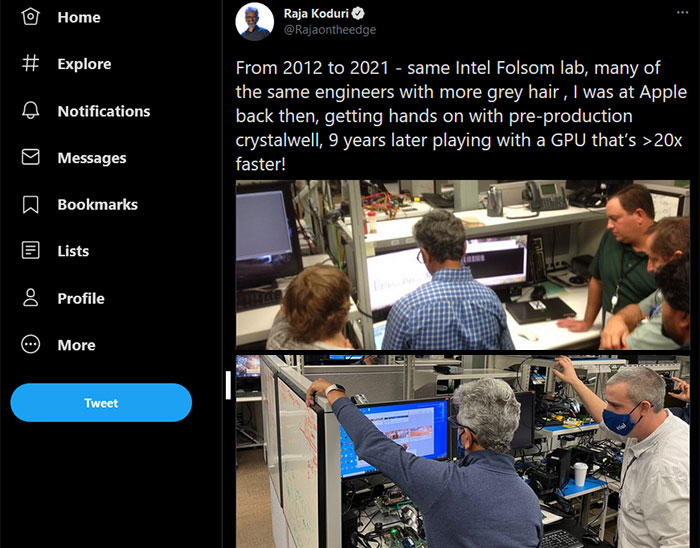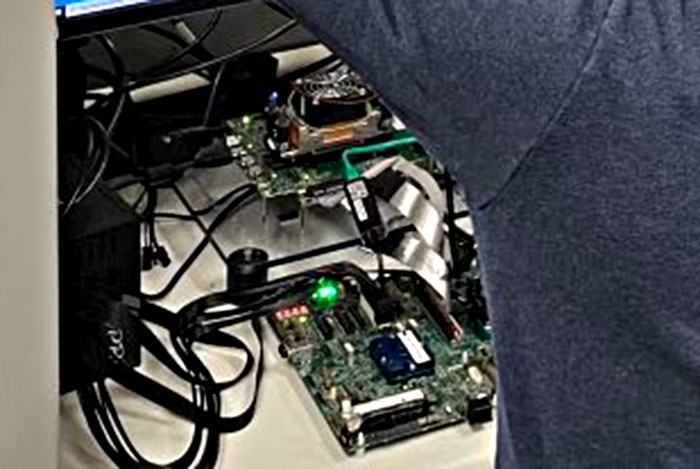Just ahead of the weekend Intel's chief architect Raja Koduri took to Twitter to share some of his career nostalgia, but if you read between the lines there are some quite tasty morsels of info about the upcoming Intel Xe-HPG hinted at here.

Above you can see the images comparing Koduri's visit to Intel's Folsom Lab (as an Apple employee back then) and a few days ago as "playing with a GPU that’s >20x faster" than the Intel Crystal Well iGPU for Haswell. The vintage iGPU was known as Iris Pro 5200, and was equipped in the top-end Intel Core i7-4770R processor.
So, have we got a comparison reference statement from Intel's chief architect giving us a hint at the Xe-HPG performance? Koduri is currently testing Xe-HPG GPUs in 3DMark, as we have seen in his previous Tweets and in the contemporary lab photo you can see the 3DMark app on the screen.

The Intel GPU test bench
In tests the Intel Iris Pro 5200 graphics score averages 1,432 points in the 3DMark Fire Strike. If we multiply this score by 20 to give a baseline expectation of the Xe-HPG GPU under test we get a score of about 29,000 points, and it could easily be shooting at 30,000+. Such a score is very close to the 29,316 average for the Nvidia GeForce RTX 3060 Ti as collected by the 3DMark online database. For another reference point, AMD's Radeon RX 5700 XT has an average graphics score of 27,408 in the same test.
The above calculations and comparisons are a big leap from the seemingly casual photos and statement shared by Koduri on Friday, so of course must be taken with a pinch of salt. However, the Xe-HPG cards will be targeting contemporary PC gaming with all DirectX 12 features including ray tracing turned on so will need to be aiming for the RTX 3060 Ti level of performance at the lowest.
If Intel can get the level of performance we are seeing hinted at, ample supplies out, and its pricing right, we could be looking at a much more interesting three horse GPU race in H2 this year.






